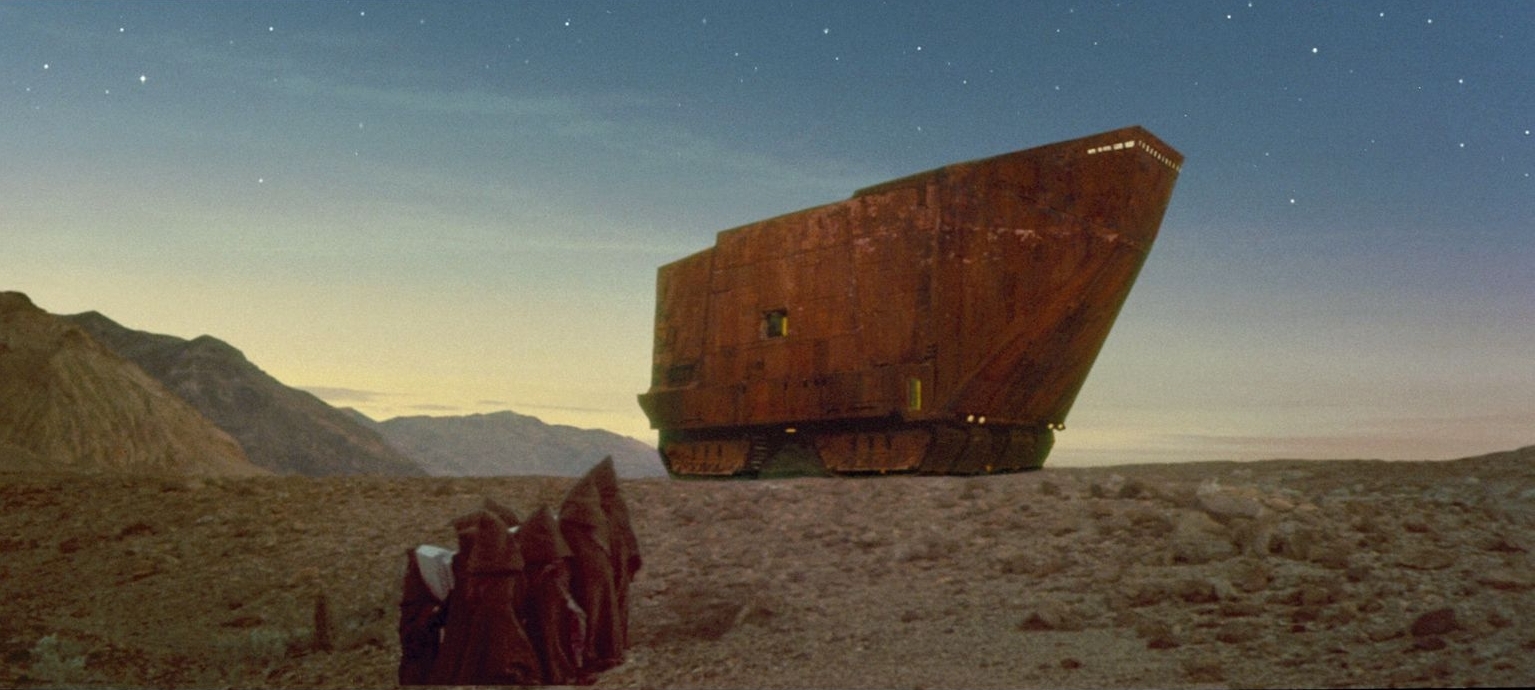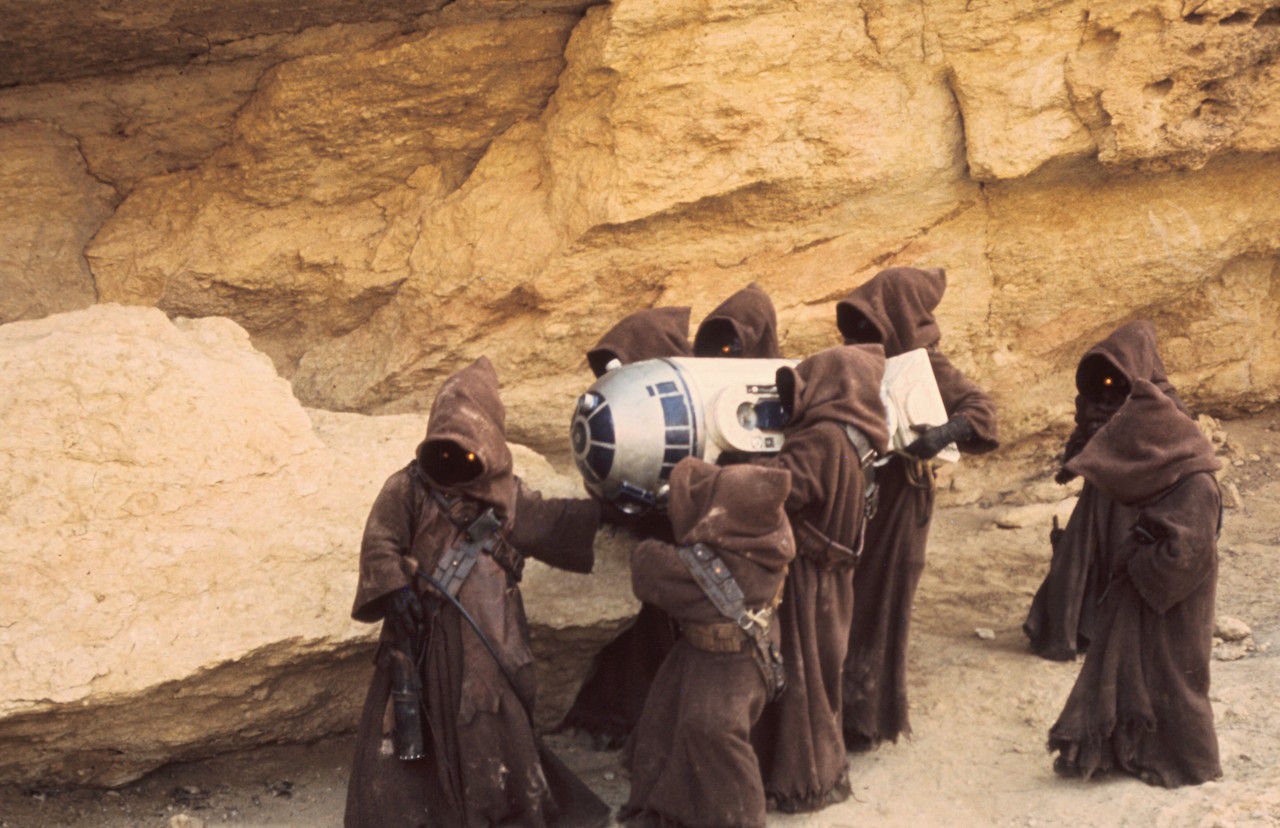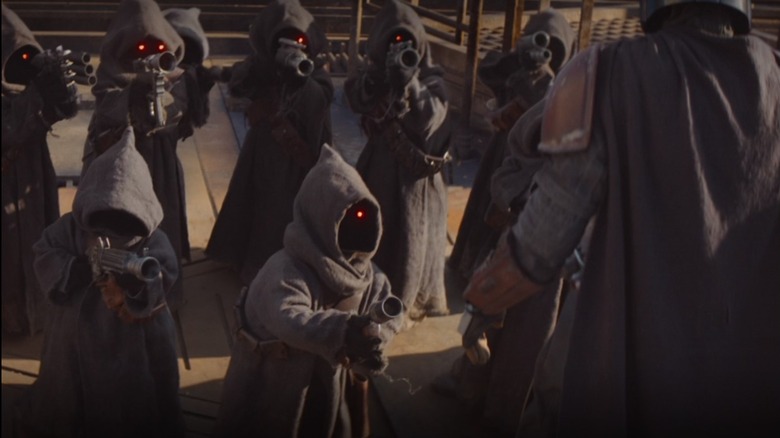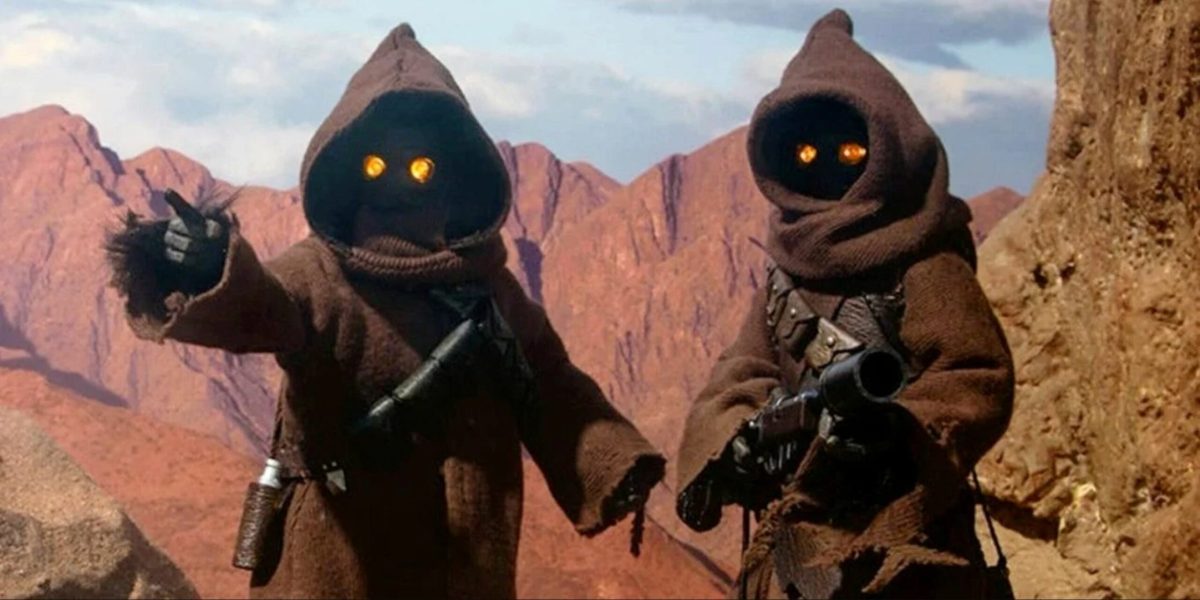Let’s face it, Jawas are the real heroes of Star Wars. If it weren’t for those small desert-dwellers, those adventures in a galaxy far, far away wouldn’t have happened.
I know. You’re probably screaming “Utinni!” like an astonished Jawa.
But without these heroes, C-3PO and R2-D2 might never have been reunited after their pod crashed on Tatooine. Luke Skywalker would never have met the droids and never been led to reclusive hermit Obi-Wan Kenobi. The old Jedi Knight and the young pilot wouldn’t have ended up aboard the Millennium Falcon with Han Solo and Chewbacca- which all means the unlikely crew would never have ended up anywhere near the Death Star.
The original trilogy would have been entirely different, there’s no doubt. Perhaps nine hours of Luke Skywalker bull’s-eyeing womp rats in his T-16, blissfully ignorant of his legacy or the Force, until the Death Star moved to the Outer Rim and bullseyed Tatooine.
Fortunately, we don’t have to endure that or prequels and sequels of younger and older womp rats, and we have Jawas to thank. Yes, those small, vermin-like, strangely cute humanoids. They’ve become an enduring part of the franchise, even if we don’t know what they look like under their hoods. Or do we?
A Jawa’s life

Jawas were one of the first alien species we met in Star Wars Episode IV: A New Hope. Motoring slowly across the deserts of Tatooine in their giant sandcrawlers, their incessant scavenging and trading were instrumental in Luke Skywalker understanding who he was. Unfortunately, the first band we met paid the ultimate price when the Empire caught up with them.
Jawas are indigenous to Tatooine, although they’ve made their way to other planets where they’re known as Offworld Jawas (as seen in the first season of The Mandalorian). We’ve mostly seen them living in sleeve-to-hood ecosystems similar to their home planet. Every day, under Tatooine’s twin suns, the Jawas survive by scavenging from ships and discarded mechanics — for which they have a passion. Their huge shuffling vehicles are homes to bands of Jawa. They are moving showrooms for their loot and fortresses that help them evade Tusken Raiders, krayt dragons, and storms.
We’ve learned more about this enigmatic race from their recurring roles in Star Wars movies and TV shows like The Mandolorian and The Book of Boba Fett. Subsequent appearances have helped build their reputation and even their skills with ion blasters.
Jawas are short, about a meter tall, although at least one in A New Hope appeared to be taller than average. Apart from their cute high-pitched language and mercantile existence, the Jawas’ most compelling feature is their dress. Ruffled hand-woven robes gathered around their small, fast-moving frames, peaking in a hood. And deep in the dark well of every Jawa’s hood are two glowing eyes. Few creatures in Star Wars have managed to slide between adorable and creepy like Jawas.
What’s under a Jawa’s hood?

It’s tempting to think there’s nothing under those hoods except some floating eyes. Of course, that’s pretty much the truth. There’s never been official confirmation of what Jawas actually look like in Star Wars canon. We’ve never seen one de-hooded and catching some rays on-screen.
What we do have are behind-the-scenes shots of Jawas unrobed — for which we advise viewer discretion. Photos from Episode VI: Return of the Jedi show they have square heads wrapped in dark cloth and mechanical eyes. A disturbing image, and safe to say that was more to do with the practicality of filming.
What Jawas look like has been a question the extended Star Wars universe hasn’t been able to resist answering. We’ve pieced together what’s likely to lie under that desert clobber.
It probably won’t make you scream ‘utinni!’ to hear that although a few have speculated they’re devolved humans, the majority view is that Jawas are rodent-like.
Shortly before their first appearance, Alan Dean Foster’s novelization of Star Wars beat the film to market, revealing Jawas to pop culture in late 1976. That novel developed the Jawa story, but not in a flattering way. As well as suggesting Jawas are related to Tusken Raiders, he compared them to rodents. While Foster kickstarted the mystery by stating that Jawas have never been seen outside their protective cloaks, he added a cruel flourish that they’re “extraordinarily ugly.”
In Chuck Wendig’s Aftermath — an official novel leading up to the events of Episode VII: The Force Awakens — gangster Adwin Charu compared them to wet rats thanks to their animal odor. In The Book of Boba Fett, engineer Peli Motto was a bit kinder when she described them as quite furry.
The most significant exploration of Jawa society and its members’ distinctive appearance came from the anthology From a Certain Point of View, published to mark the 40th anniversary of the first Star Wars film. Stories in the Sand by Griffin McElroy assumed the point of view of a Jawa who dreamed of starships as his scavenging band was picking up R2-D2. The story added a great deal of detail about Jawa robes, explaining that they regulate moisture and temperature and are provided to the young as soon as they can walk. However, it didn’t give much away about what lay underneath.
The great Jawa mystery

It’s not surprising the rodent idea stuck. Star Wars creator George Lucas initially envisaged Jawas as giant rats before being deemed too theatrical. His solution spawned four decades of fan speculation. Forums are full of artistic impressions of Jawas’ flattened rat-like faces. The mystery has supported some fantastic theories. Some have even inflated the Jawas’ importance more than this article’s opening (if that’s possible).
One compellingly ridiculous theory even suggested that Maz Katana — the chilled force-sensitive pirate voiced by Lupita Nyong’o we met in The Force Awakens — is not only a Jawa, but has appeared throughout the Star Wars saga. The in-depth theory draws in the spectator Jawas in Episode I: The Phantom Menace and connects Maz’s goggles with the scavengers’ mesmerizingly bright eyes.
The Maz theory is nowhere near the most preposterous Star Wars theory that’s popped up since the early 1970s, but given that Jawas have managed to keep their appearance firmly under wraps for so long, it’s no ‘utinni!’ that it’s happened.

